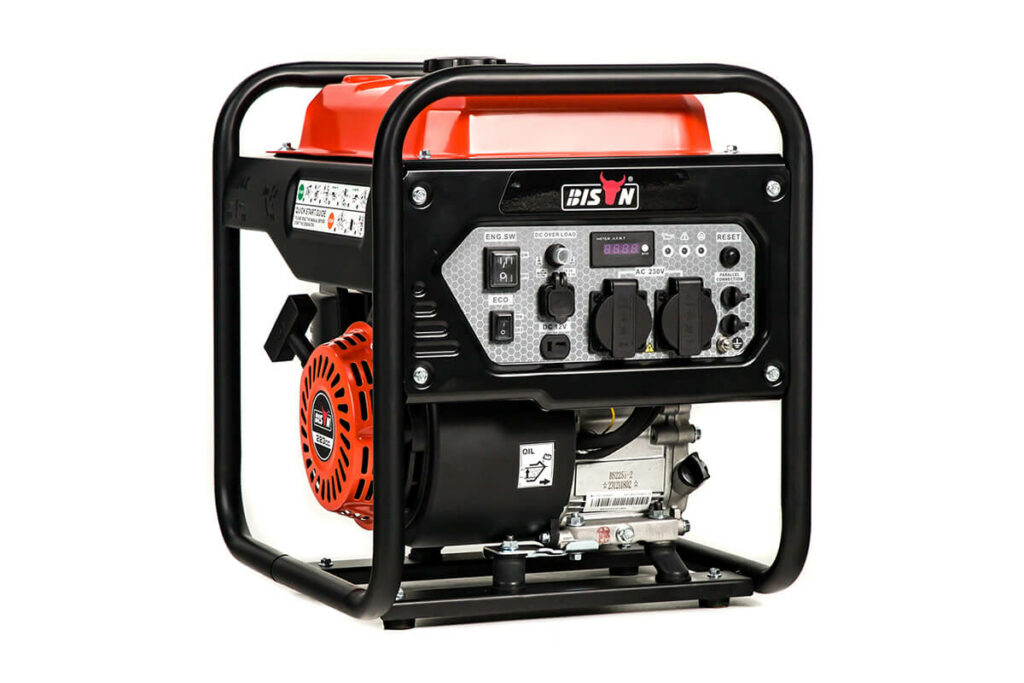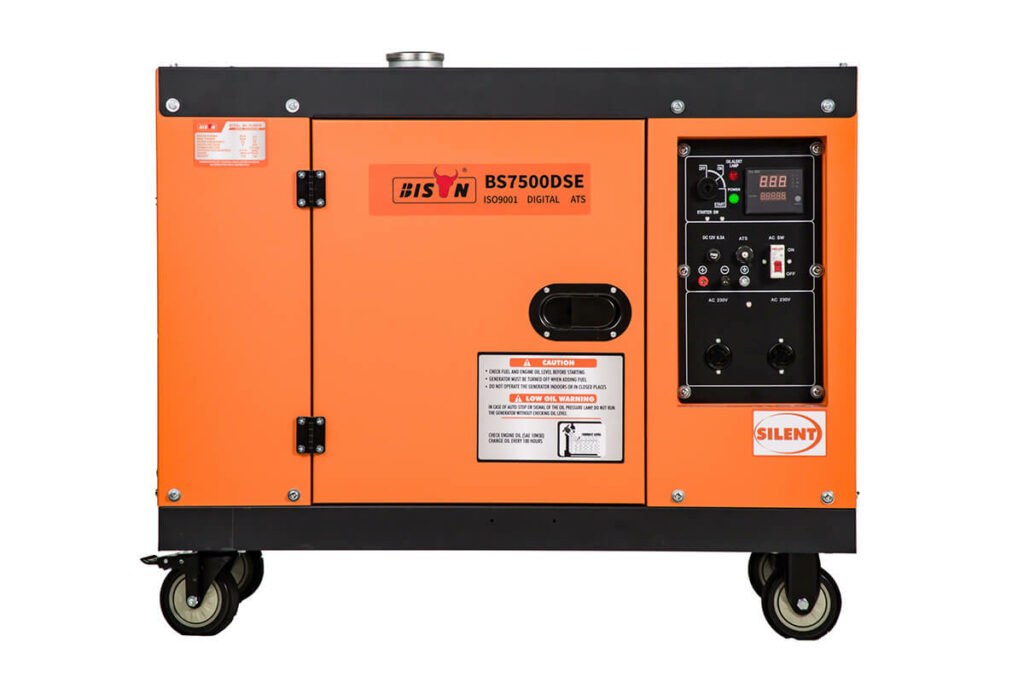air cooled generators manufacturers & suppliers
Explore BISON’s air-cooled generators with natural cooling technology and compact design. A variety of performance and design options are available.

power life from here
power life from here
why choose
BISON diesel generator
why choose
BISON air cooled generator

BISON’s air-cooled generators feature advanced ventilation design to ensure optimal temperature control and enhanced performance, maintaining optimal operating

Optimized airflow design
Innovative airflow configuration maximizes cooling efficiency and operating efficiency while maintaining structural integrity, reducing maintenance complexity.

rugged construction
BISON’s air-cooled generators feature industrial-grade components and reinforced construction to ensure continuous operation for years.
sustainable solutions
sustainable solutions
frequently asked questions
frequently asked questions
How long can an air-cooled generator run continuously?
The run time of an air-cooled generator depends on a number of factors, including fuel type, engine displacement, load, and tank capacity. It is important to note that air-cooled generators are often designed for intermittent use and may require a cool-down shutdown after running for several hours, especially under heavy loads.
Can air cooled generators overheat?
Yes, air cooled generators can overheat if the cooling fan isn’t working properly or if the engine is operated at high loads for extended periods. This is an inherent risk due to its cooling design, but it is largely preventable. The keys to preventing overheating are threefold:
- Maintain good ventilation
- Regular maintenance
- Operate within specified limits
How long does an air cooled generator last?
If properly maintained, air cooled generators can last from 2,000 to 10,000 hours or more. The quality and frequency of maintenance, usage patterns, environmental conditions, and brand or model of the generator all affect the life of the generator.
diesel generator purchase guide
air cooled generator guide
In today’s fast-paced world, reliable 24-hour power is essential for both residential and commercial environments. An air-cooled generator is a type of power generation equipment that uses air as the primary cooling medium. Unlike water-cooled systems that rely on liquid cooling, air-cooled generators utilize fans and ventilation designs to ensure effective heat dissipation. Their simplified design has made air cooled generators the preferred choice across multiple industries.
BISON’s technical guide provides expert analysis of air cooled generator systems. We’ll explore operational mechanics, distinctive technical advantages, and practical implementation scenarios to help you select these efficient power solutions.

What is an air cooled generator?
An air cooled generator operates through direct thermal exchange with ambient air. Unlike liquid-cooled generators that rely on antifreeze and coolant systems, this system relies on natural airflow and forced air circulation. As the unit converts mechanical energy to electricity, its integrated cooling mechanism follows a precise thermal regulation process:
- Cooling components guide airflow through the engine compartment
- Heat-sink assemblies capture thermal energy during operation
- Active exhaust pathways discharge heated air
Cold air entering the system draws heat from generator parts via convection currents. The temperature differential between ambient air (typically 25-40°C) and operational components (reaching 65-90°C) creates a self-regulating thermal equilibrium. This physics-driven process achieves consistent cooling without external intervention.
At the heart of an air-cooled generator are several key components that work together:
- Core components: engine/prime mover, generator head, control panel.
- Main cooling components: heat sink/radiator, integrated fan, blower, vent housing.
- Auxiliary cooling components: air intake system, exhaust port, temperature sensors to monitor operating temperature and control system.
Characteristics of air-cooled generators
Design features
Air-cooled generators feature a streamlined, compact design that integrates an enhanced radiator and fin-design cooling system. This design minimizes the need for bulky cooling units and eliminates multiple potential failure points. The modular air-cooled structure makes these generators lighter, and easier to maintain and service.
Size and capacity range
Air cooled generators deliver power outputs spanning 500W to 25kW, engineered for light-to-medium duty cycles (4-12 hr/day). These units are designed to maintain optimal performance in mild climates, but their capacity may be affected by environmental factors. BISON’s wide range of models for air-cooled generators gives users the flexibility to choose the right generator size for their needs.
Efficiency considerations
BISON air cooled generators achieve 80-82% thermal efficiency (ISO 8528 standards) during continuous operation, translating to fuel consumption rates of 0.3-1.2 L/kWh depending on load. Although their cooling system is relatively simpler than that of water-cooled systems, modern designs ensure adequate efficiency, especially in intermittent or short-term use. For construction sites or emergency backup scenarios requiring <8 h/day runtime, air cooled units typically outperform liquid-cooled alternatives in fuel economy (12-18% savings).
Low maintenance requirements
The compact design makes these generators virtually maintenance-free. Unlike water-cooled generators that require regular checks for leaks or coolant levels, air-cooled systems focus primarily on filter cleaning or fan maintenance. They are highly reliable in typical operating environments and can last for years with minimal maintenance.
High cost-effectiveness
One of the significant advantages of air-cooled generators is the more affordable cost-effectiveness, both in terms of upfront costs and maintenance costs. Their simple design reduces manufacturing costs. In addition, their efficient performance and low fuel consumption make them incur minimal operating expenses in daily life.
In addition, there are some limitations of air-cooled generators that need to be considered:
Air-cooled generators tend to produce more noise due to the fan-cooling mechanism. This is still a challenge compared to quieter alternatives such as water-cooled systems. If you need a quieter generator, you can choose BISON silent generators, whose insulation and noise reduction design further reduce the decibel output.
And, in hot climates or environments with insufficient ventilation, air-cooled generators may have difficulty dissipating heat effectively, thereby reducing efficiency or causing overheating risks.

Applications of air cooled generators
The versatility and reliability of air-cooled generators make them a valuable power solution for a variety of scenarios, from daily backup power to emergency situations. Let BISON list these applications for you:
- Residential backup power
- Commercial facilities
- Industrial applications
- Camping and outdoor activities
- Small and medium-sized enterprises (SMEs)
- Emergency power during disasters
- Power supply in remote areas
- Military and field operations
Choosing the right air-cooled generators
Power output
Assess Your Power Needs: Determine the power of all the appliances or devices that need to be powered in your home, business, or specific application. Add their power (starting and running) to select a generator with the right power capacity.
Higher or Lower: Choose a generator with slightly more power than you expect to need to avoid overloading.
Fuel types
- Gasoline: Most common and widely used, cost-effective but with a shorter shelf life.
- Diesel: More fuel-efficient and longer-lasting, but can be noisier.
- Propane: Cleaner burning and easier to store long term, but with a lower energy density and may have slightly lower power output than gasoline.
- Dual- or tri-fuel options: Generators that can run on multiple fuels can maintain the possibility of power generation in an emergency.
Portability
If you plan to move your generator frequently, you should buy a model that is lightweight, has wheels, and a handle. Choose a portable model when storage space is limited or in a small space.
Runtime
A larger fuel tank generally means longer run time. Fuel efficiency is a key factor if you need to run your generator for long periods of time.
Inverter vs. traditional generator
Inverter models: Cleaner electricity, suitable for sensitive electronic devices such as laptops and smartphones.
Traditional models: Better for powering heavy appliances and tools.
Safety features
- Low oil shutoff: Prevents engine damage when oil level is low.
- Overload protection: Protects the generator from overheating or damage when operating above-rated current.
- Surge protection: Prevents damage to plugged-in devices.
- Carbon monoxide sensor: Automatically shuts down the generator when carbon monoxide levels reach dangerous thresholds.
- Ground fault circuit Interrupter (GFCI): Protects users from electric shock.

BISON air cooled generator manufacturer
Air cooled generators serve as vital power sources across diverse settings, from home backup installations to large-scale industrial facilities. Their space-efficient configurations and cost-effective pricing cater to users ranging from households to manufacturing plants. In this article, we explore the basic principles, advantages, selection and applications of air-cooled generators.
For dealers seeking reliable, high-performance air-cooled generator solutions, BISON provides you with the most worry-free solution. As a leading Chinese generator manufacturer with ISO-certified production facilities, we maintain strict quality protocols, R&D-driven innovation, and 24/7 technical support.
Join BISON today to explore our extensive product range and learn how we can apply our 15 years of electromechanical engineering expertise and project experience to meet your customers’ power resilience needs.
Table of Contents
our latest articles















